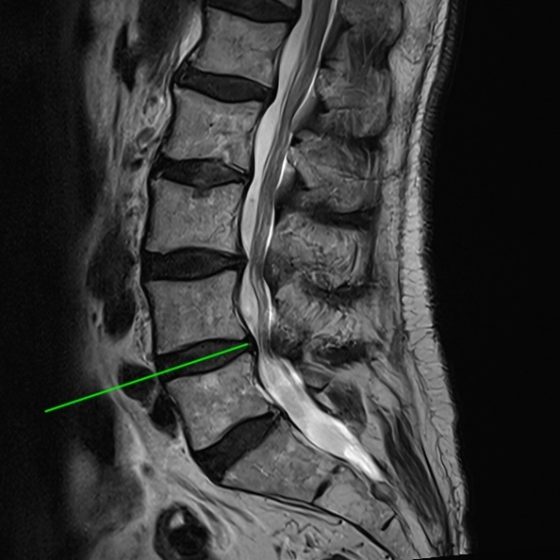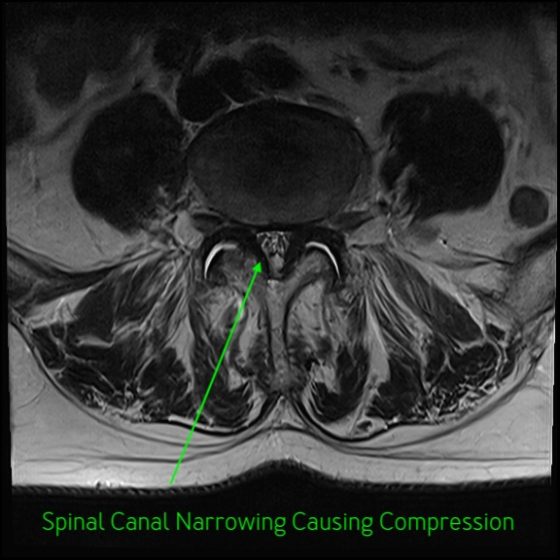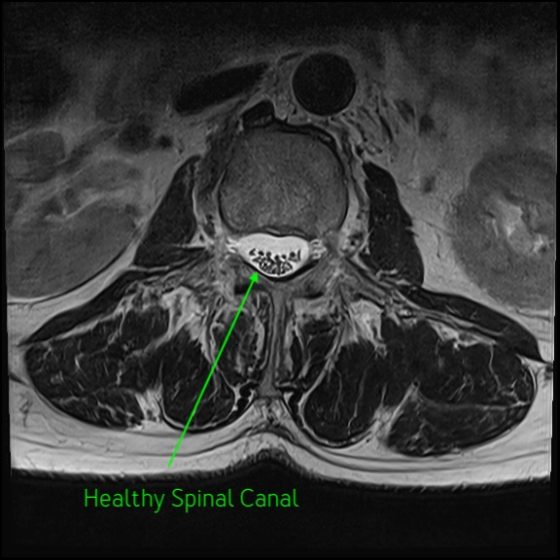Lumbar Spinal Stenosis
Lumbar spinal stenosis is a condition that affects the lower part of your spine, also known as the lumbar region. The spine is made up of bones (vertebrae) that protect the spinal cord and nerves, and motion is achieved by the discs that sit between these vertebrae. In lumbar spinal stenosis, the space inside the spinal canal narrows, which can put pressure on the spinal cord and the nerves that travel through the spine to your legs.
Common Symptoms
- Pain in the lower back: This pain may be persistent or come and go.
- Leg pain or cramping: This often happens when you walk or stand for long periods. The pain might feel better when you sit down or bend forward.
- Numbness or tingling: You might feel these sensations in your legs, feet, or buttocks.
- Weakness in the legs: This can make it difficult to walk, especially for long distances.
- Difficulty with balance: You might feel unsteady on your feet, especially when walking.
Causes
Several factors can cause the narrowing of the spinal canal in lumbar spinal stenosis:
- Age-related changes: As you get older, your spine naturally changes. The disks between your vertebrae can dry out and shrink, leading to a narrowing of the space in the spinal canal.
- Arthritis: This is one of the most common causes. The wear and tear of arthritis can lead to the growth of bone spurs, which can narrow the spinal canal and cause pressure on the spinal cord or nerves.
- Thickened ligaments: The ligaments in your spine can thicken over time and contribute to narrowing of the spinal canal.
- Herniated discs: When a disc in your spine bulges or ruptures, it can press on the spinal cord or nerves.
Diagnosis
The key to diagnosis is in matching up the history, physical exam and imaging studies. Imaging studies, such as X-rays and MRIs are used to get a detailed look at your spine and confirm the diagnosis.
Treatment
- Non-surgical treatments: Many people with lumbar spinal stenosis can manage their symptoms with physiotherapy, exercises, medications, or injections that reduce inflammation and pain.
- Surgery: In more severe cases, or when non-surgical treatments have failed, surgery might be recommended to relieve pressure on the spinal cord or nerves. This can involve removing parts of the bone, disk, or ligaments that are causing the narrowing.
- Surgical options can include laminectomy, laminotomy, or spinal fusion.
Surgical Options
Living with Lumbar Spinal Stenosis
While lumbar spinal stenosis can cause discomfort and impact your daily activities, there are many ways to manage the condition and improve your quality of life. Regular exercise, maintaining a healthy weight, and activity modifications can help you stay active and reduce symptoms.
If you experience worsening pain, weakness, or difficulty with bladder or bowel control, you should seek medical attention right away. These could be signs of impending more serious permanent nerve damage.




